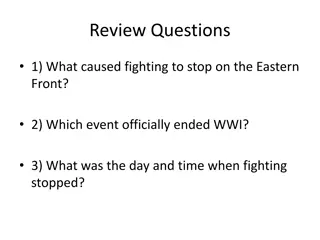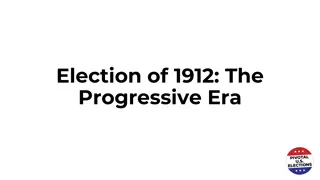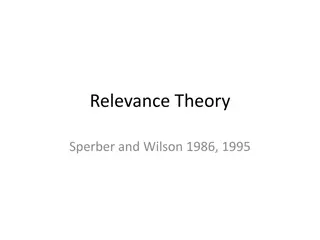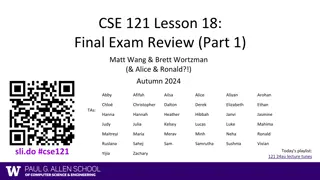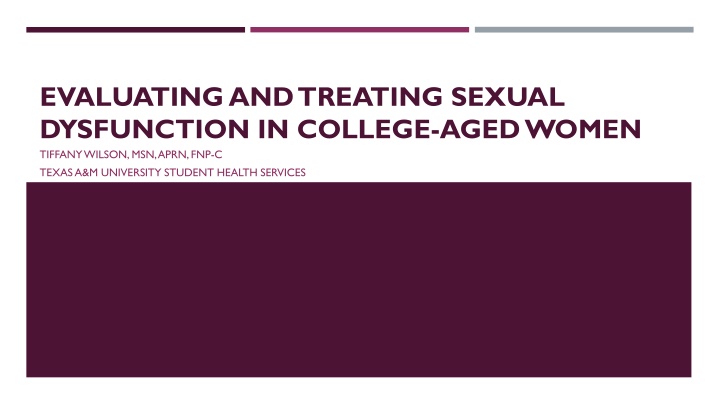
Treating Sexual Dysfunction in College-Aged Women: Case Study and Treatment Insights
Explore a case study of a 19-year-old woman experiencing sexual dysfunction, including evaluation, treatment methods, and outcomes. This presentation sheds light on defining and addressing female sexual dysfunction in young adults and offers valuable insights for healthcare providers. Dive into the challenges, interventions, and considerations in managing sexual dysfunction in college-aged women.
Download Presentation

Please find below an Image/Link to download the presentation.
The content on the website is provided AS IS for your information and personal use only. It may not be sold, licensed, or shared on other websites without obtaining consent from the author. If you encounter any issues during the download, it is possible that the publisher has removed the file from their server.
You are allowed to download the files provided on this website for personal or commercial use, subject to the condition that they are used lawfully. All files are the property of their respective owners.
The content on the website is provided AS IS for your information and personal use only. It may not be sold, licensed, or shared on other websites without obtaining consent from the author.
E N D
Presentation Transcript
EVALUATING AND TREATING SEXUAL DYSFUNCTION IN COLLEGE-AGED WOMEN TIFFANY WILSON, MSN, APRN, FNP-C TEXAS A&M UNIVERSITY STUDENT HEALTH SERVICES
OBJECTIVES At the end of this presentation, attendees will be able to: Define female sexual dysfunction Describe how to evaluate female sexual dysfunction Know the treatment options available for female sexual dysfunction
CASE STUDY 19 year old female pt presents to discuss inability to orgasm since coitarche at age 16. She says that when she does have sex, there is little to no pleasure in the act, but that the desire is there at the time. She has minimal pleasure with clitoral stimulation and has never achieved orgasm. She is in a long term relationship and is frustrated with this, as she wants to be able to enjoy sex with her boyfriend. She does note some dyspareunia that happens occasionally upon initial penetration as well as with deep penetration which feels like a deep pain, almost like a cramp, but it doesn't happen often. She and her boyfriend have tried many different things such as lubrication and toys without success. She says the only thing that somewhat feels pleasurable is oral sex, but even with that she has never achieved an orgasm. She is also unable to orgasm with masturbation. She does have a history of sexual assault that happened last year, but she has been to counseling and states she is no longer having problems from this, and these symptoms started before that. In the past she has been on OCPs and Depo- Provera, and now is on Nexplanon. She has a history of depression and used to be on medication for this, but has not been on any antidepressants in over 6 months, and notes that her anorgasmia preceded the medications. She feels her depression is well controlled without medications at this time.
CASE STUDY On exam: Regressed labia minora Clitoral size normal, no phimosis, no pain upon retracting clitoral hood Mildly decreased vaginal rugae Labs WNL Estradiol: 231 Testosterone, total: 29 Testosterone, bioavailable: 4 SHBG: 52.6 Initial treatment was vaginal estrace
CASE STUDY Pt followed up 4 months later, no improvement in symptoms with estrace, but exam at this time was normal Started Wellbutrin 150mg daily Trial of Viagra
CASE STUDY 2 months later, pt reports no improvement even with Wellbutrin and Viagra, still anorgasmic At this point, pt decided to have her Nexplanon removed One week after Nexplanon removal, pt did achieve orgasm with partner At the next follow up a month later, pt admitted she thinks a history of depression was part of the problem, and was improved by Wellbutrin
WHAT IS FEMALE SEXUAL DYSFUNCTION (FSD)? Female sexual dysfunction is defined as persistent, recurrent problems with sexual response, desire, orgasm, or pain There are 3 subtypes of FSD: Female sexual interest/arousal disorder Genitopelvic pain/penetration disorder Female orgasmic disorder Must be present at least 6 months and affect 75-100% of sexual encounters Must cause significant personal distress
WHAT IS FEMALE SEXUAL DYSFUNCTION (FSD)? Can be primary, secondary, or situational Each condition can be subtyped as: Lifelong vs acquired Generalized vs situational Organic vs psychogenic Mixed type Many women have more than one type Origin may be multifactorial
HOW COMMON IS FSD? It s difficult to determine prevalence, as current research gives conflicting reports Thought to be anywhere between 30-65% of American women Data from the U.S. National Health and Social Health Survey showed 43% of women are affected The Mercer study found 53.8% of women have at least one sexual problem
WHAT ABOUT IN THE COLLEGE POPULATION? TAMU FSD study (Publication pending) Performed during the 2017 fall semester Surveyed all female students presenting to the women s clinic After the survey was completed, incomplete surveys and those outside target age group (18-29) were excluded Participants completed the Female Sexual Function Index (FSFI), as well as a demographic info sheet to determine medical history and current medications Total participants: 407 Total pool: 310
FEMALE SEXUAL FUNCTION INDEX (FSFI) Multidimensional self-reporting instrument for sexual dysfunction 19-item questionnaire Scores of 0-5 for questions regarding desire, arousal, lubrication, orgasm, satisfaction, and pain Minimum score 2.0, maximum score 36.0 FSD is present when FSFI score is <26.55
RESULTS OF TAMU STUDY Total prevalence of FSD: 35.5% Those in the 18-21 age group had 8-9 times greater risk of FSD than the over 21 group Lower risk for FSD for those with coitarche between 12-17 comparted to 18+ Those with depression were 6.5 times more likely for FSD 3 times more likely for those with bipolar disorder No statistical significance regarding race, sexual orientation, or history of sexual assault
FEMALE SEXUAL INTEREST/AROUSAL DISORDER Hypoactive sexual desire disorder (HSDD) Characterized by low sexual desire Sexual arousal disorder Inability to attain or maintain sufficient sexual excitement Sexual aversion disorder Phobic aversion to and avoidance of sexual contact with a sexual partner May be secondary to previous trauma
GENITOPELVIC PAIN/PENETRATION DISORDER Dyspareunia Genital pain associated with intercourse Should be subcategorized as superficial (at/near the introitus), mid-vaginal, or deep Vaginismus Involuntary spasms of the musculature of the lower third of the vagina that interferes with penetration Noncoital sexual pain Occurs with sexual stimulation other than intercourse
FEMALE ORGASMIC DISORDER Delay in or absence of attaining orgasm after sufficient sexual stimulation and arousal May be primary or secondary Often influenced by comorbid conditions and medications (SSRIs)
FEMALE SEXUAL INTEREST/AROUSAL DISORDER Start with detailed history Medical, surgical, social history Any history of psychiatric illness? Sexual assault? Relationship problems? Current medications Hormonal contraceptive use Psychiatric medications Physical exam External and internal vaginal exam necessary Look for signs of hormonal deficiencies Clitoris indicative of testosterone Labia minora related to estrogen Vaginal rugae related to estrogen
FEMALE SEXUAL INTEREST/AROUSAL DISORDER Labs Rule out endocrine disorders Estradiol, testosterone, sex hormone binding globulin (SHBG), FSH Treatment depends on cause If cause if medicinal, may be able to adjust medications to help If psychogenic, try counseling first May want to use sex therapist specifically can search for one through the American Association of Sexuality Educators, Counselors, and Therapists (aasect.org) If hormonal issue, treat for that If no cause found, consider medication Wellbutrin Buspar Addyi
GENITOPELVIC PAIN/PENETRATION DISORDER Start with history keep possible causes in mind Cramping with periods? What severity? Any problems with cramping between periods? Is there bleeding with sex? Any vaginal discharge, odor, itching, irritation? Any sexual assault/abuse history? Problem with relationship? Is self-stimulation or tampon insertion painful? Is the pain related to certain positions?
GENITOPELVIC PAIN/PENETRATION DISORDER Exam Look for possible infection as cause of pain vaginitis, STIs, and PID must be ruled out first If vaginismus, try inserting one finger to determine amount of muscle tension Visualize hymenal ring any abnormalities? Test pelvic floor muscles for pain Work-up Labs are mainly to look for infection wet prep, vaginal culture, STI testing Pelvic ultrasound if deep pain
GENITOPELVIC PAIN/PENETRATION DISORDER Treatment depends on cause If infectious, treat the infection If endometriosis, discuss birth control options OCPs, IUD, implant are all good options If OCPs, may want to use continuously If pelvic floor dysfunction, try to set up pelvic floor PT APTA.org can search for pelvic floor PT in your area If vaginismus, try to determine if there s a cause. May need counseling for this. May benefit from low dose benzo prior to sexual activity to promote relaxation Discuss self vaginal dilation If hymenal issue, may need hymenectomy
FEMALE ORGASMIC DISORDER History Any psychiatric illnesses or medications? History of sexual assault? Relationship problems? Is this primary or secondary? If secondary, has anything changed? Can orgasm be achieved manually? Hormonal contraceptive use?
FEMALE ORGASMIC DISORDER Exam Pay particular attention to clitoral and labial size Can be an indicator if this is a hormonal issue Make sure clitoral hood can be retracted Evaluate vaginal rugae and lubrication Labs Estradiol, testosterone, SHBG, FSH
FEMALE ORGASMIC DISORDER Treatment depends on cause If medicinal, adjust medications as needed If related to psychiatric illness, sexual assault history, or relationship problems, encourage counseling and/or sex therapy If clitoral phimosis present, use topical steroid If no cause found, consider treatment options Wellbutrin, Buspar Viagra Addyi Vaginal estrace may help as well
MEDICATIONS FOR FSD Wellbutrin 150-300mg daily Can increase sexual desire, also can help with anorgasmia Can be added to SSRI if that is the causative factor Viagra 25mg at least 30 minutes prior to sexual activity For anorgasmia Will likely have insurance issue prescribe one 50mg tablet at first, instruct to take half tablet and try at least twice
MEDICATIONS FOR FSD Buspirone 10-15mg BID; titrate up to therapeutic dose Can be adjunct therapy with SSRI Can help with HSDD and anorgasmia Better than Wellbutrin if anxiety is a factor In one study, 58% of individuals treated with buspirone reported an improvement in sexual function compared with 30% treated with placebo L-Arginine May increase blood flow to clitoral and vaginal tissue, improving sensitivity and response to sexual stimulation 6g 45 minutes prior to intercourse
MEDICATIONS FOR FSD Addyi (Flibanserin) Serotonin 1A receptor partial agonist and a serotonin 2A receptor antagonist that results in a decrease in serotonin activity and an increase in dopamine and norepinephrine activity FDA approved for treating HSDD 100mg daily at bedtime Trial for 8 weeks, DC at that time if no improvement Black box warning regarding hypotension and syncope with concomitant alcohol use Prescribers must enroll in REMS (Risk Evaluation and Mitigation Strategy) program www.AddyiREMS.com Pharmacy used must also be part of REMS program Have patient sign REMS form Should not be first line therapy
TAKEAWAY FSD is surprisingly common in college-aged women! Should FSD be universally screened for? Always consider causes when guiding interview Your first treatment may not work be open to trying new things! Tailor treatment choices to patient s needs
REFERENCES Aslan, E., & Fynes, M. (2008, February). Female sexual dysfunction. International Urogynecology Journal, 19(2), 293-305. DeUgarte, M.D., C. M., Berman, Ph.D., L., & Berman, M.D., J. (2004, September 10). Female sexual dysfunction from diagnosis to treatment. Sexuality, Reproduction and Menopause, 2(3), 139-145. English, C., Muhleisen, A., & Rey, J. A. (2017, April). Flibanserin (Addyi). Pharmacy and Therapeutics, 42(4), 237- 241. Goldstein, I., Kim, N. N., Clayton, A. H., DeRogatis, L. R., Giraldi, A., Parish, S. J., . . . Worsley, R. (2017, January). Hypoactive Sexual Desire Disorder: International Society for the Study of Women's Sexual Health (ISSWSH) Expert Consensus Panel Review. Mayo Clinic Proceedings, 92(1), 114-128. Rosen, R., Brown, C., Heiman, J., Leiblum, S., Meston, C., Shabsigh, R., . . . D'Agostino, R. (2000). The Female Sexual Function Index (FSFI): A. ournal of Sex & Marital Therapy, 26(2), 191-208.




